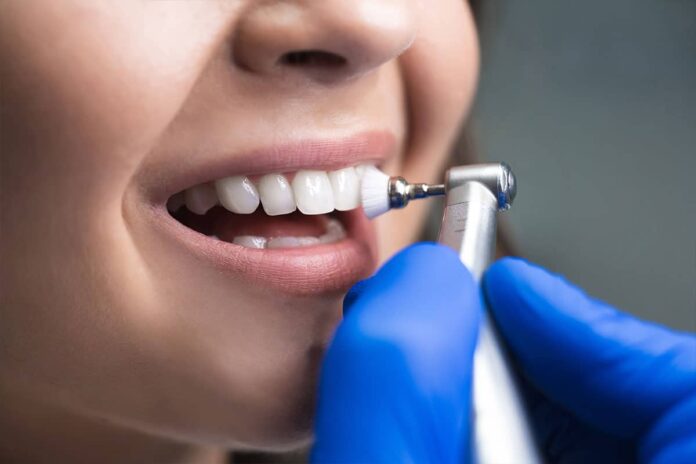Dental restorations must have a polished, smooth surface to serve both functional and aesthetic purposes. To achieve a faultless surface on restorations and guarantee patient satisfaction and durable outcomes, dental polishers, created expressly for this use, are essential.
It can be difficult to choose the best dental polishers because there are so many options. We offer thorough guidance in this article to assist you in selecting the ideal dental polishers for your practice.
What Are Dental Polishers?
Dental restorations made of composites, ceramics, and metal alloys can have surface imperfections, stains, and roughness removed with the help of rotary dental polishers. To meet distinct clinical needs, they come in a variety of forms, sizes, and abrasive materials. Typically, dental polishers are constructed of silicone, diamond, or aluminum oxide, each of which has special qualities for a variety of polishing activities.
How to Select Dental Polishers?
It is crucial to take the material of the restoration into account when choosing dental polishers. Different materials call for various polishing methods and abrasive levels. For instance, silicone polishers that offer a high shine and little heat generation are frequently needed for composite restorations. Polishers made of diamond or aluminum oxide are frequently used in ceramics or metal alloys. It will be easier for you to select the ideal dental polishers and get the best results if you are aware of the characteristics of each restoration material.
Consider Grit Size and Shape
Dental polishers’ abrasiveness and the amount of surface roughness they can remove are both governed by their grit size. Smaller grit sizes offer a smoother finish whereas bigger grit sizes are more abrasive and suited for first rough polishing. Choose polishers based on the desired level of polishing needed for each restoration. To ensure effective and efficient polishing, the shape of the polishers should also match the contour and surface anatomy of the restoration.
Consider Speed and Pressure
Achieving the desired polish depends significantly on the speed and pressure with which the tooth polisher is used. High speeds and excessive pressure can cause overheating, damage to the repair, and patient discomfort. A flawless dental polish requires the use of proper technique, which includes controlled speed and soft pressure.
About Quality and Sterilization
To obtain consistent and dependable results, it is essential to invest in high-quality dental polishers. Search for trustworthy producers of dental polishers that adhere to industry requirements. Make sure the polishers are also compatible with the sterilization techniques you choose. Others might need chemical sterilization or disposable choices, while some polishers can be autoclaved.
Bottom Line
For the best dental polish and patient satisfaction with restorations, choosing the appropriate dental polishers is crucial. When selecting dental polishers, take into account the restoration material, grit size, form, speed, and pressure. Prioritise quality as well as make sure that it is compatible with your sterilization techniques. Dental professionals can obtain superior surface finishes by adhering to these recommendations and using the appropriate polishing processes, which will increase the durability and aesthetic appeal of dental restorations.
Read Also
- The Future of Men’s Health: Why Telehealth Is Here to StayTelehealth isn’t just a pandemic trend that faded into the background. For Australian men, it has become one of the most practical, time-saving, and stress-free ways to manage everyday health — and it’s shaping the future of how we access care. Platforms like DOCTO, an Australian online doctor and specialist telehealth service, are leading the… Read more: The Future of Men’s Health: Why Telehealth Is Here to Stay
- How to Build a Simple, Clean Skincare Routine ?You don’t need a complicated skincare routine. It doesn’t have to be something that requires twenty different products and confusing steps. Your routine works well with just a few high-quality clean ingredients. The beauty industry keeps pushing more products, but your skin actually needs less. You only need a simple approach to get better results… Read more: How to Build a Simple, Clean Skincare Routine ?
- How Preventive Dental Care Supports Overall HealthHave you ever wondered how a simple dental checkup could impact your entire body? Oral health is more than just a bright smile. Studies show that poor dental habits can contribute to serious health problems. Gum disease and tooth decay are linked to heart disease, diabetes, and infections. Yet, many people overlook preventive dental care.… Read more: How Preventive Dental Care Supports Overall Health
- Seeing Clearly in a High-Tech World: A Deep Dive into Advanced Vision Care ServicesProtecting your eyesight isn’t optional—it’s essential. Modern eye care has evolved far beyond basic exams, offering advanced diagnostics, personalized treatments, and surgical innovations that keep vision sharp for life. A leading example is Intermountain Eye Center, home to specialists like Dr Fishburn Boise, where patients receive comprehensive, high-level vision care designed to preserve long-term eye… Read more: Seeing Clearly in a High-Tech World: A Deep Dive into Advanced Vision Care Services
- Why the Keto Diet Works for Some People—and Fails Dramatically for Others: An Ayurvedic Breakdown for Modern HealthcareThe keto diet has dominated weight-loss culture for years. For some people, it produces rapid fat loss, stable energy, and improved mental clarity. For others—especially those who gain weight easily—it leads to burnout, digestive distress, rebound weight gain, high cholesterol, and a metabolism that feels slower than before. Healthcare often frames this as a discipline… Read more: Why the Keto Diet Works for Some People—and Fails Dramatically for Others: An Ayurvedic Breakdown for Modern Healthcare
- How to Choose the Best Assisted Living Facility for SeniorsAre you looking for the right assisted living facility for a senior loved one? Choosing a place can feel overwhelming. There are many factors to consider, from care services to the environment. Safety, comfort, and social opportunities play important roles in daily life. Each senior has unique needs and preferences that must be met. Understanding… Read more: How to Choose the Best Assisted Living Facility for Seniors







